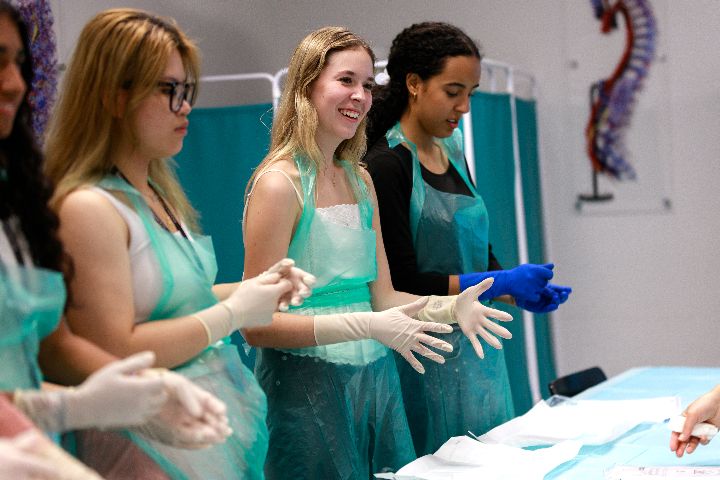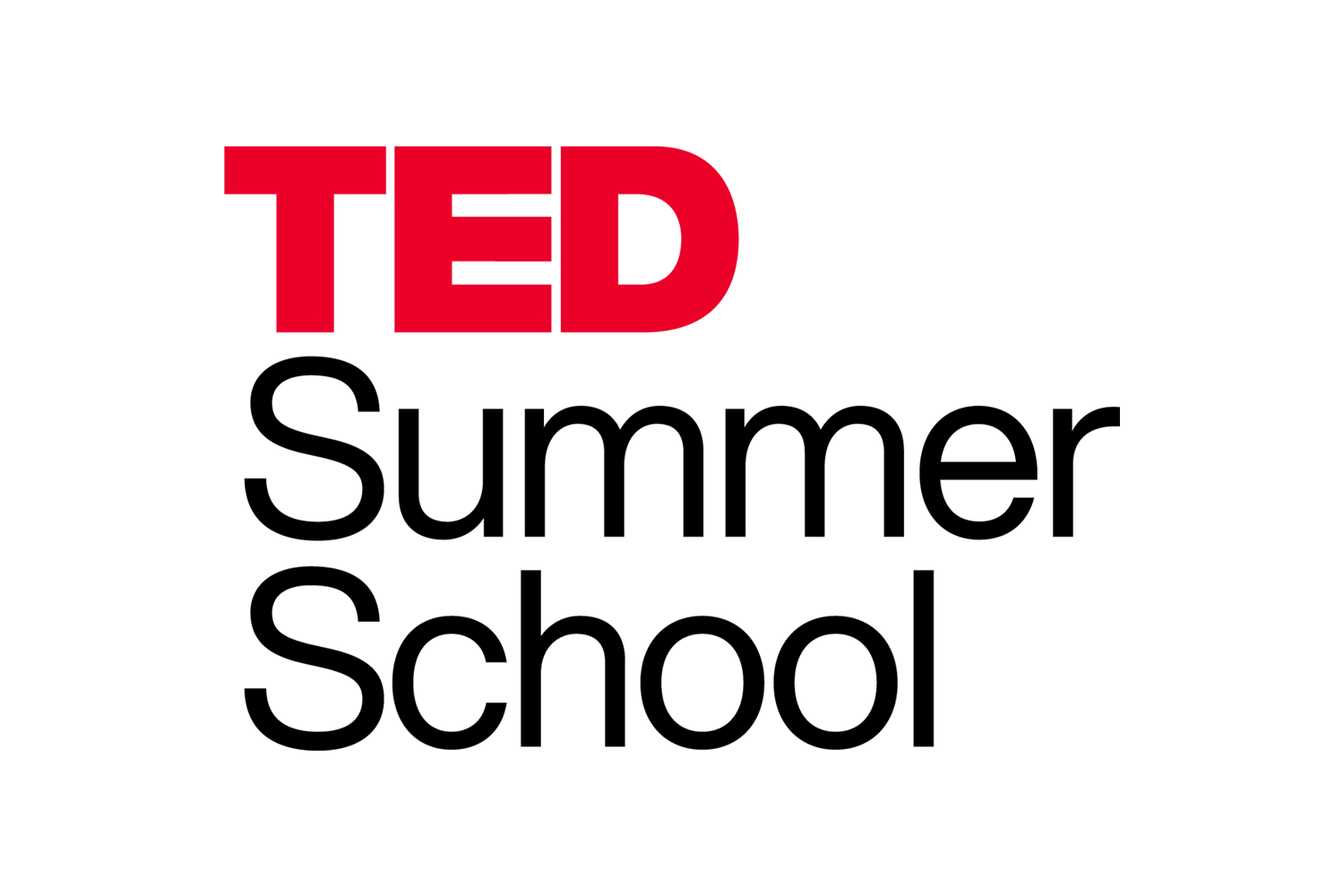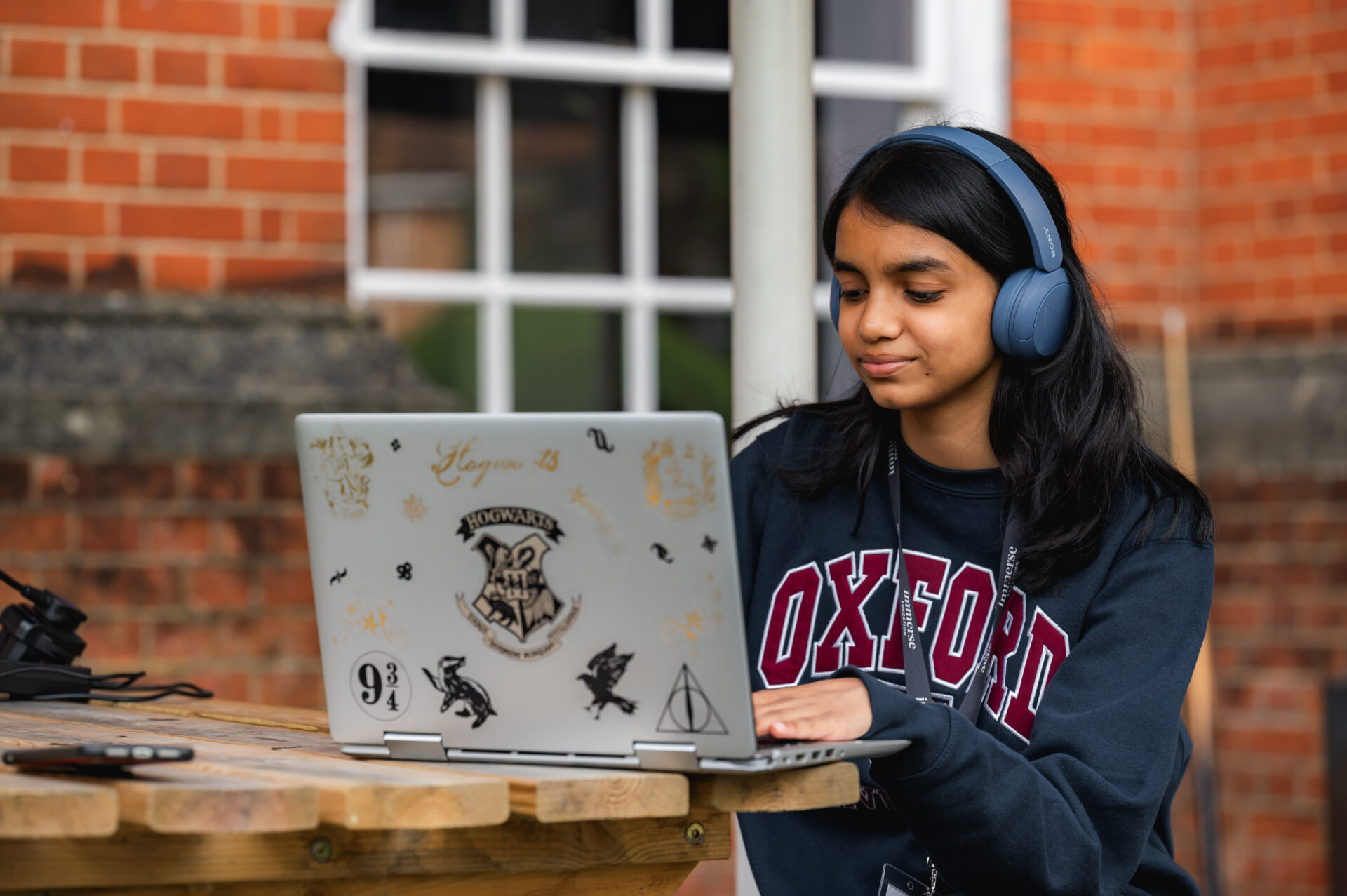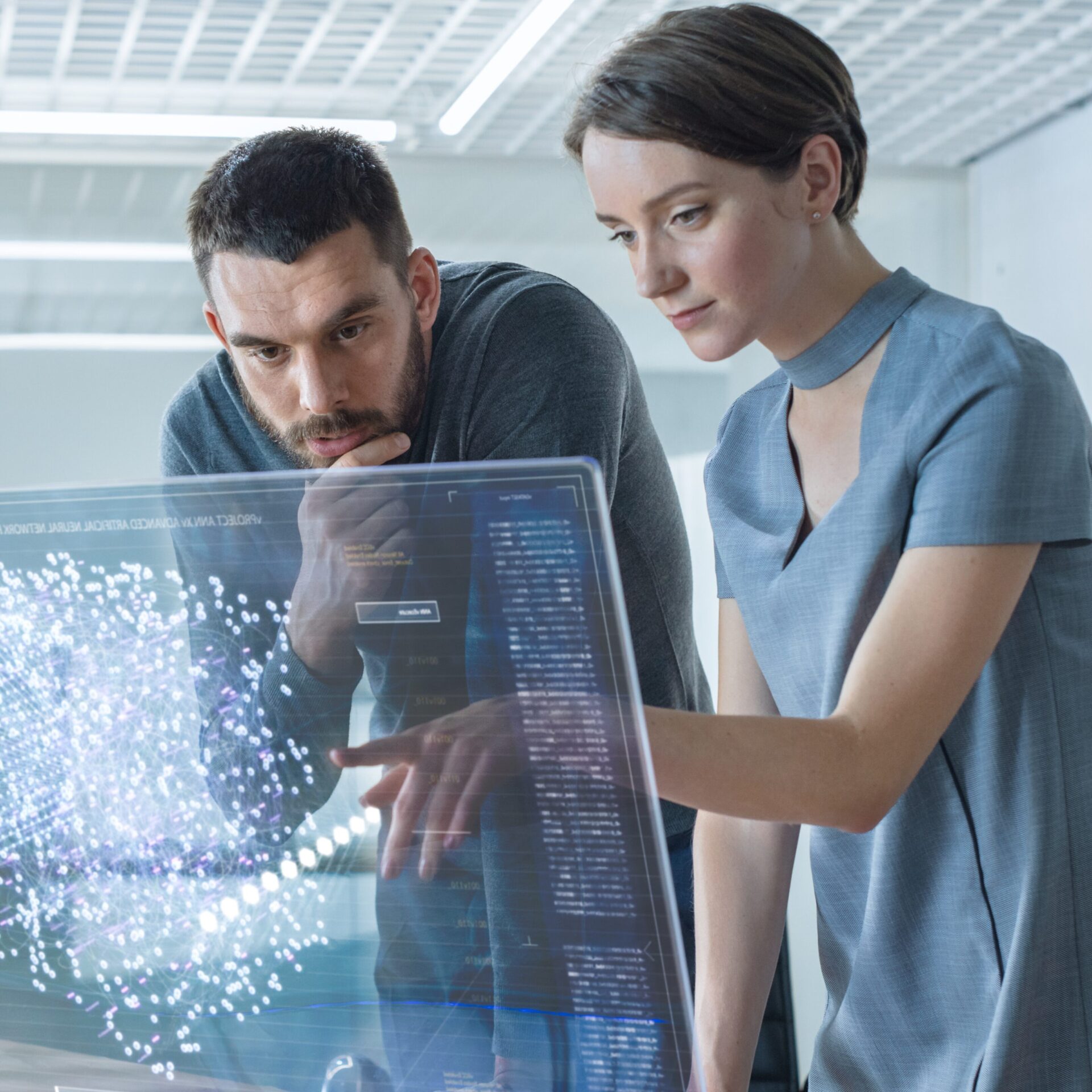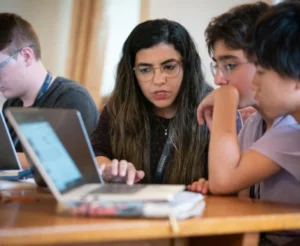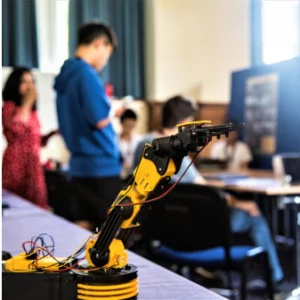100% Scholarship Winner, Sofia P
To what extent do the neural networks used in AI mimic the human brain?
Brain-inspired ANNs in AI have been under extensive development, aiming to gain more neuroscientific insights through artificial imitation.1 Despite significant progress, including similar basic architecture through the use of interconnected neurons for information transfer2, ANNs remain far from accurately mimicking the human brain, as they fall short in biological plausibility, learning efficiency, neuroplasticity, and key aspects of human cognition.
Despite ANNs resembling the brain’s basic structure, they lack its biological complexity. There is a massive gap in the number of neurons and connections, with 86 billion neurons and 100 trillion synaptic connections in the human brain, whereas artificial systems operate on much smaller scales3. Additionally, the brain functions efficiently on 20 watts, while deep learning models require vastly more energy, especially for tasks like image recognition or natural language processing4. Moreover, the brain’s electrochemical processes are oversimplified into mathematical operations in ANNs, reducing their ability to accurately represent neurological functions.5
The lack of complexity is evident in many ways, particularly in the weaker learning capabilities of ANNs compared to humans. A study on this issue showed that learning in DNNs is far less efficient, requiring significantly more exposure to stimuli for adjustments. Moreover, new information often showed to interfere with and alter previously learned knowledge in ANNs. The researchers proposed the example of a bear that lost its hearing but had relied on its sight, smell, and hearing to find salmon. While an ANN would lose its ability to use sight and smell after such a change, the bear’s brain would adapt, preserving earlier learned skills, highlighting the rigidity of artificial systems.6
Furthermore, the brain exhibits neuroplasticity – the ability to reorganize and adapt neural pathways in response to experiences7. Once ANNs are trained, they typically do not change unless retrained, whereas the brain constantly adapts in real time.8 Even with new techniques like transfer and online learning, ANNs are far less dynamic than the brain.9 While the brain’s adaptiveness and flexibility are also seen in its ability to apply knowledge across various domains, ANNs do not possess the capacity for general intelligence and typically operate in fixed architectures designed for specific tasks. For example, a deep learning system trained to identify objects in images cannot apply that knowledge beyond its specific task, unlike humans who can apply visual understanding across various contexts like drawing, recognizing objects, or interpreting art.10
Lastly, the human brain is far more advanced in emotional intelligence, abstract reasoning, intuition, and decision-making, which are some of the main highly developed attributes differentiating the human mind from any other currently known living species. While the ability to apply knowledge in ambiguous scenarios11—such as understanding artistic masterpieces, deciphering complex metaphors, and making decisions in uncertain situations without explicit data, all of which require emotional intelligence and intuition—ANNs currently do not possess the ability to accurately replicate those aspects12, thus failing to capture the full scope of human consciousness.
Overall, ANNs currently mimic the human brain to a rather limited degree. Firstly, they lack the complexity of the brain due to an oversimplified imitation, leading to weaker learning capabilities, a lack of adaptiveness, and, lastly, failing to capture the essence of the human mind.
Footnotes
1https://news.mit.edu/2022/neural-networks-brain-function-1102
2https://fastdatascience.com/ai-in-research/how-similar-are-neural-networks-to-our-brains/
3https://www.linkedin.com/pulse/neural-networks-mathematical-replication-brain-ai-cheema
4https://www.kyb.tuebingen.mpg.de/772529/news_publication_21977686_transferred
5https://link.springer.com/chapter/10.1007/978-3-642-02490-0_97
7https://www.ncbi.nlm.nih.gov/books/NBK557811/
8https://ieeexplore.ieee.org/abstract/document/8057597 .
9https://philarchive.org/archive/NAGTNC-2#page=124
10http://wsc10.softcomputing.net/ann_chapter.pdf
11https://www.frontiersin.org/journals/artificial-intelligence/articles/10.3389/frai.2021.622364/full
12https://www.sciltp.com/journals/ijndi/article/view/115
Bibliography
Abraham A, ‘29: Artificial Neural Networks’ (JohnWiley & Sons 2005) http://wsc10.softcomputing.net/ann_chapter.pdf
Brinda Aparajita Cheema, ‘Introduction the Neural Network in Artificial Intelligence Is Adapted from that of the Brain. Although, Even If This Is the Case, They Do Differ in Many Ways from Their Biological Counterparts.’ (Linkedin.com28 August 2022) https://www.linkedin.com/pulse/neural-networks-mathematical-replication-brain-ai-cheema
‘Cybernetics and Neural Systems’ (Tuebingen.mpg.de2024) https://www.kyb.tuebingen.mpg.de/772529/news_publication_21977686_transferred
Holderrieth P, Lennon M and Rigney G, ‘The New Collection’ (Sophie Nagler 2021) https://philarchive.org/archive/NAGTNC-2#page=124
Korteling JE (Hans) and others, ‘Human- versus Artificial Intelligence’ (Front. Artif. Intell.25 March 2021) https://www.frontiersin.org/journals/artificial-intelligence/articles/10.3389/frai.2021.622364/full
Puderbaugh M and Emmady PD, ‘Neuroplasticity’ (National Library of Medicine1 May 2023) https://www.ncbi.nlm.nih.gov/books/NBK557811/
Rosen, A., Rosen, D.B. (2009). Neural Networks That Mimic the Human Brain: Turing Machines versus Machines That Generate Conscious Sensations. In: Köppen, M., Kasabov, N., Coghill, G. (eds) Advances in Neuro-Information Processing. ICONIP 2008. Lecture Notes in Computer Science, vol 5506. Springer, Berlin, Heidelberg. https://doi.org/10.1007/978-3-642-02490-0_97
‘Study Shows That the Way the Brain Learns Is Different from the Way That Artificial Intelligence Systems Learn | University of Oxford’ (www.ox.ac.uk3 January 2024) https://www.ox.ac.uk/news/2024-01-03-study-shows-way-brain-learns-different-way-artificial-intelligence-systems-learn
Thomas Wood, ‘How Similar Are Neural Networks to Our Brains?’ (Fast Data Science5 July 2022) https://fastdatascience.com/ai-in-research/how-similar-are-neural-networks-to-our-brains/
Trafton A, ‘Study Urges Caution When Comparing Neural Networks to the Brain’ (MIT News | Massachusetts Institute of Technology2 November 2022) https://news.mit.edu/2022/neural-networks-brain-function-1102
Wang L and Orchard J, ‘Investigating the Evolution of a Neuroplasticity Network for Learning’ (2019) 49 IEEE Transactions on Systems, Man, and Cybernetics: Systems 2131 https://ieeexplore.ieee.org/abstract/document/8057597/citations#citations
Zhao G, Li Y and Xu Q, ‘From Emotion AI to Cognitive AI’ (2022) 1 International Journal of Network Dynamics and Intelligence 65 https://www.sciltp.com/journals/ijndi/article/view/115
Join the Immerse Education 2025 Essay Competition
Follow the instructions to write and submit your best essay for a chance to be awarded a 100% scholarship.

Why Apply To The Immerse Education Essay Competition?
Are you a highly motivated student aged 13-18? Have you ever wanted to experience studying at one of the world’s top universities?
The Immerse Education essay competition allows you the chance to submit an essay for the chance to be awarded a scholarship to attend one of our award-winning academic or career-based summer schools.
Many students use summer schools as a way to explore subjects they’re curious about, whether that’s trying out a computer science summer school to see if coding or AI might be the right path, or choosing a biology summer school if they’re interested in lab work, medicine, or environmental science. For others, the competition becomes a stepping stone to flexible options like an online summer school, which can fit around busy schedules while still offering world-class teaching.
How To Apply To The Immerse Education Essay Competition
If you’re aged 13-18 and interested in applying to the Immerse Education essay competition, please visit our essay competition page for more details.

